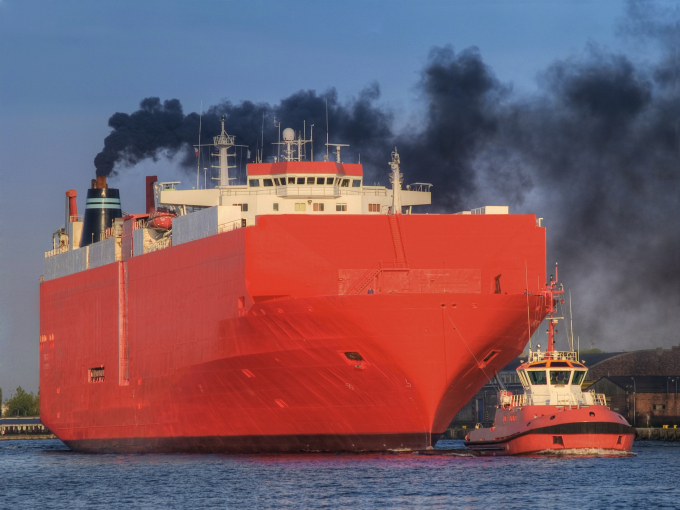Shipping emissions over the North Sea could increase twenty-five percent by 2030
Within the framework of the EU Clean North Sea Shipping project, Dr. Volker Matthias of the Helmholtz-Zentrum Geesthacht studied the current pollution emitted by commercial ships. Taking into account different scenarios, the coastal researcher also calculated possible future emissions. The models show that, without further legislative regulation and technical modifications to the vessels, the nitrogen oxide emissions from shipping traffic could increase twenty-five percent by the year 2030.

Currently twenty to thirty percent of the sulfur and nitrogen oxide concentrations in the North Sea air arise from shipping traffic. (Copyright: istockphoto)
"We first needed to analyze the current situation. For this analysis, we closely examined each ship that had traveled on the North Sea in 2011. What was important for us was the size, vessel and engine type, fuel consumption and, of course, each ship's route," explains Volker Matthias from the Institute of Coastal Research at the Helmholtz-Zentrum Geesthacht.
The collected data were then entered into the chemical transport models run at the Helmholtz-Zentrum Geesthacht. The calculations showed that currently twenty to thirty percent of the sulfur and nitrogen oxide concentrations in the North Sea air arise from shipping traffic. Though sea shipping provides us with one of the most environmentally friendly methods of transport in terms of carbon dioxide emissions, the majority of vessels operate their engines motors using sulfur-rich heavy fuel oil.
Particles can be carried through the atmosphere for hundreds of kilometers
"The topic of air pollution resulting from ships also affects regions beyond the coasts," Dr. Volker Matthias says. The shipping emissions will drift on the wind and react with gases produced by agriculture, industry and transportation. This results in what is known as particle formation. These particles can be carried through the atmosphere for hundreds of kilometers and can even be detected five hundred kilometers inland.
After surveying the situation, came step two: "We wanted to determine how concrete legislative measures can have an effect on pollutant concentration in the atmosphere. We therefore developed four different scenarios," explains Volker Matthias.
Scenario One shows that the concentration of nitrogen oxides in the atmosphere would increase in the German North Sea region approximately twenty-five percent by 2030 if legislative guidelines on shipping emissions were not tightened. "Even regulations that have been approved and will go into effect on the 1st of January, 2015 to reduce the sulfur content in fuel will not stop the deterioration of air quality in the coastal regions," says Dr. Volker Matthias. "The ships still emit high quantities of nitrogen oxides, just as before, and we estimate that ship freight on the North Sea each year will increase by two to three percent.
Strict regulations must be implemented simply to maintain current conditions
Scenarios Two and Three make it clear that strict regulations must be implemented simply to maintain current conditions. The introduction of the "Tier III" emission regulations on January 1, 2016 would serve as a first step. This legislation regulates the nitrogen oxide emissions on newly constructed ships. In order to fulfill the requirement, the new ships must either be operated with low emission liquefied natural gas (LNG) or, if using conventional heavy fuel oil, must be equipped with filters and catalytic convertors. Tier III guidelines, however, only apply to what are known as Emission Control Areas. The North Sea has, to date, been declared an Emission Control Area for sulfur, but not for nitrogen oxides. Germany can only implement further regulations in cooperation with neighboring states.
In the fourth scenario, Dr. Volker Matthias discusses better air quality. Improved air conditions could only be achieved if, by the year 2030, all existing ships, not only newly built vessels, would be required to fulfill the "Tier III Regulations."
Contact

Institut für Küstenforschung
Phone: +49 (0) 41 52 / 87 - 2346
E-mail contactHelmholtz-Zentrum Geesthacht

Helmholtz-Zentrum Geesthacht
